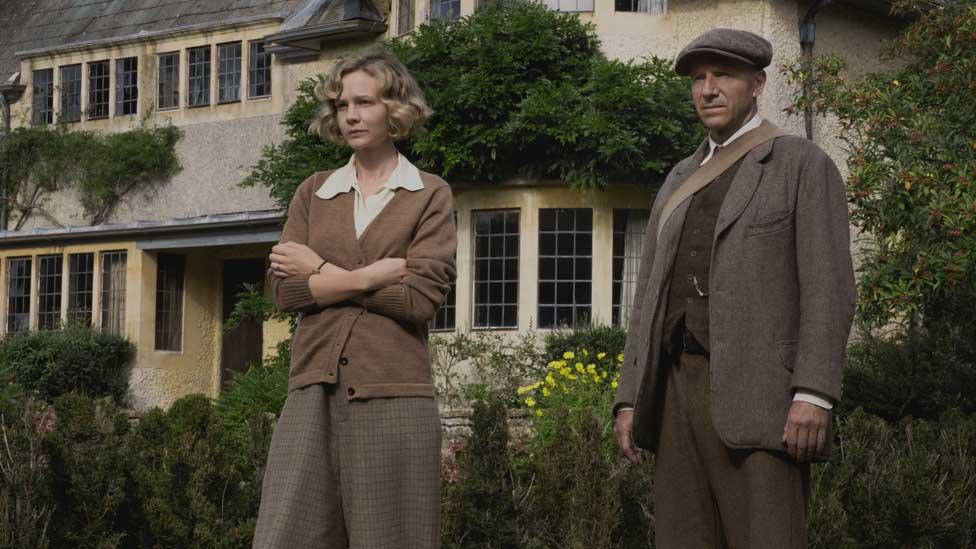Apprentices begin work on Sutton Hoo ship build
- Published
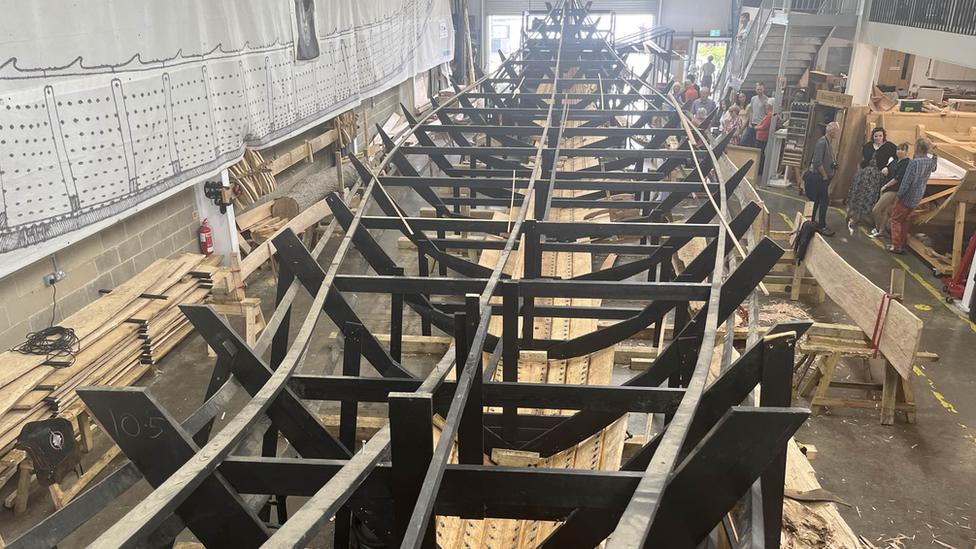
The replica of the burial ship is being created in Woodbridge, Suffolk
The National Trust has taken on three apprentices for a "once in a lifetime" chance to work on recreating an Anglo-Saxon ship found at Sutton Hoo.
The 88ft (27m) reconstruction of the burial ship, excavated in 1939, is being built in Woodbridge, Suffolk.
The story of its discovery was told in the Netflix film The Dig, starring Carey Mulligan and Ralph Fiennes.
Sutton Hoo is thought to be the final resting place of King Raedwald, the 7th Century ruler of East Anglia.
The three apprentices have started a two-week placement with the Sutton Hoo Ship's Company, a Suffolk-based charity which is spearheading the recreation in a shed on the River Deben in Woodbridge, near the Sutton Hoo site.
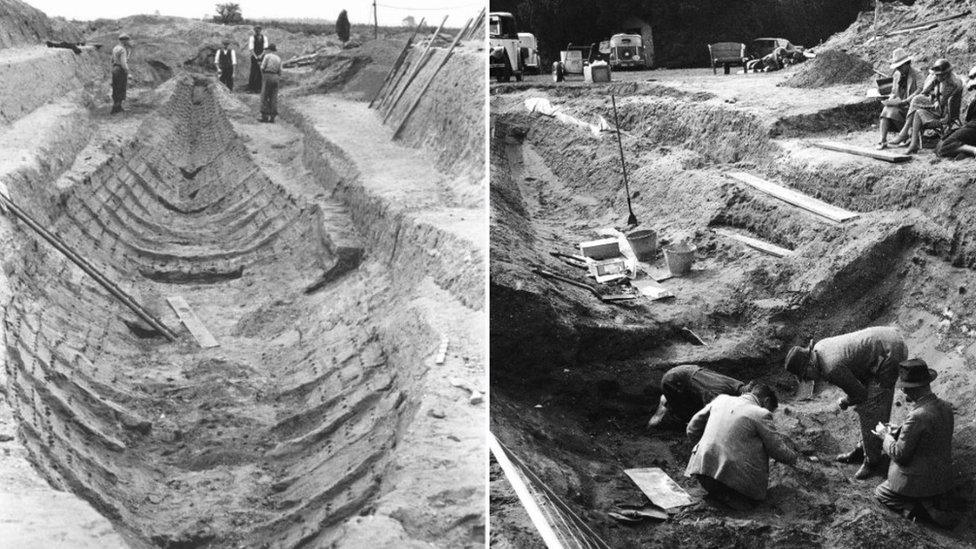
The outline of the ship was discovered in 1939. The wood had disappeared but its iron rivets remained
They will be assisting project manager Jacq Barnard, master shipwright Tim Kirk and the project team involved with the £1.5m reconstruction.
One of the apprentices, Joshua Bobbett, 32, from Shrewsbury, described the two-week placement as a "once in a lifetime" opportunity.
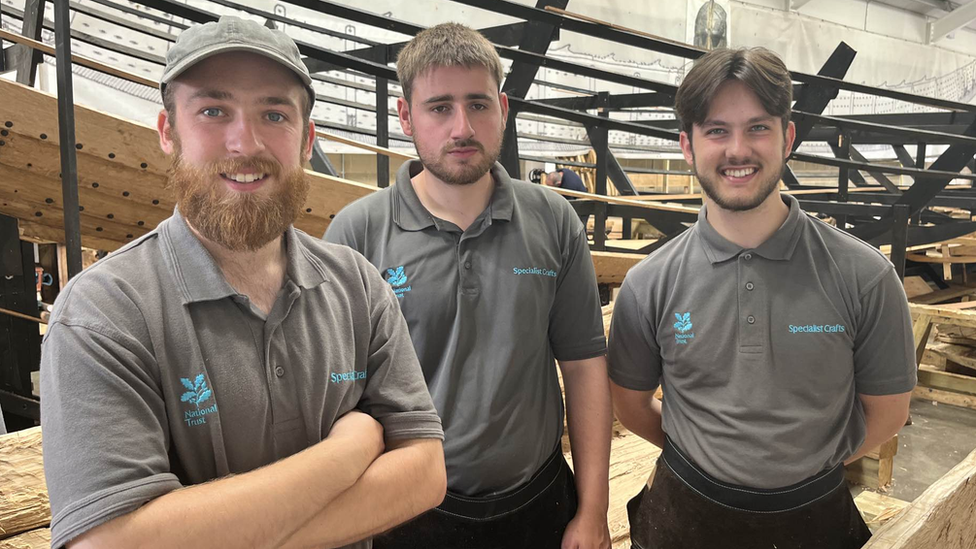
(l-r) Josh Bobbett is from Shrewsbury, Matt Lee from Worksop and Rowan Kitt from Cotehele in Cornwall
"We're learning traditional craft skills which will set us up for a lifetime of satisfying work," said Mr Bobbett.
"I've never done anything like this before.
"Learning traditional skills from traditional craftspeople, whether they're joiners or engineers, [means] you're picking something up and applying it to your own trade," he added.

What was found at the Sutton Hoo burial mounds?
The 86ft (27m) oak ship was the tomb of an Anglo-Saxon ruler who was buried around 1,300 years ago along with his possessions, warrior's uniform and equipment for hosting a feast in the afterlife
The treasures found inside included a warrior's iron helmet, a magnificent sword, Byzantine silverware, gold jewellery, a lavish feasting set and a whalebone casket
The finds revealed extensive trading links with Scandinavia, the Byzantine Empire (centred on Constantinople - modern-day Istanbul) and Egypt
They revolutionised historians' understanding of the 7th Century, previously seen as a backward time when England was divided into Anglo-Saxon kingdoms
The treasures are now at the British Museum, while the Sutton Hoo site is owned by the National Trust
Source: BBC

Jacq Barnard, project manager, said: "The Sutton Hoo Ship's Company began construction work in 2019.
"We are building the ship to learn how our ancestors would have built it and then to find out what it is capable of, once on the water.
"So far the ship has been funded by generous donations, including members of the public."
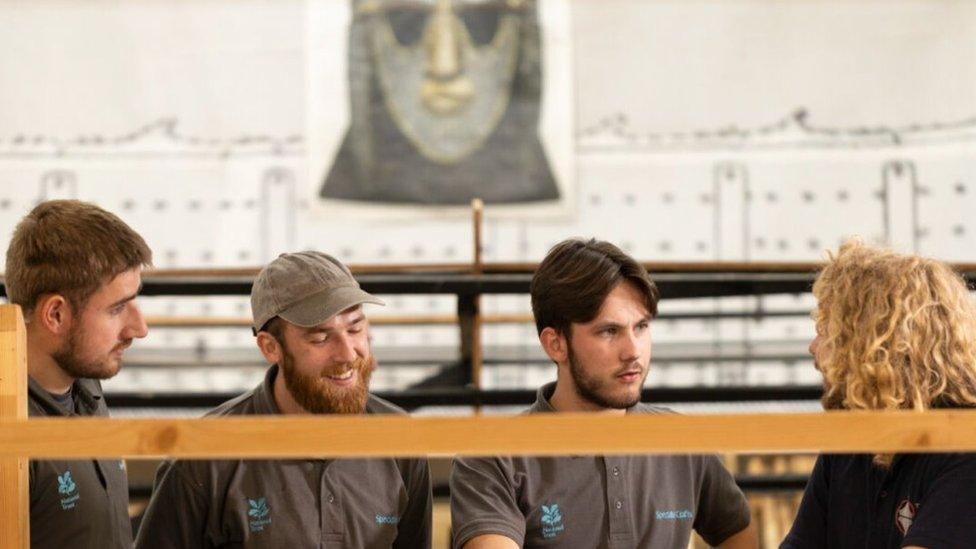
Left to right: Apprentices Matthew Lee, Joshua Bobbett and Rowan Kitt with assistant shipwright Laurie Walker
Master shipwright, Tim Kirk, said about a third of the planks of the replica ship - 36 pieces - had now been fastened on, with the remaining 60 to 70 planks expected to be in place by the end of the year.
He explained work on the replica had been delayed after when one of the first planks split - "which is one of the hazards of using green timber - freshly sawn, unseasoned timber", he said.
He said it took about six months to find a suitable tree to replace the split plank.
Despite the setback the backbone of the ship was completed in November.
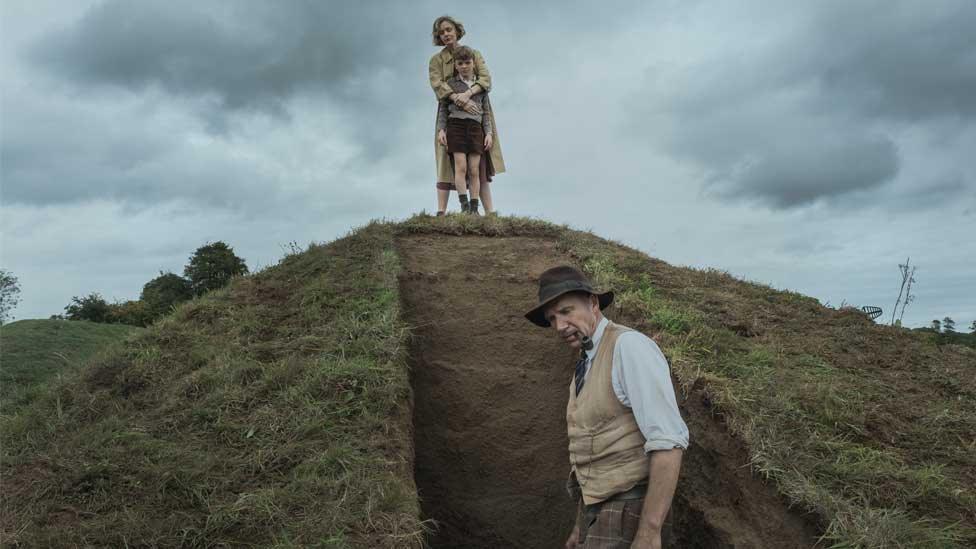
The Dig starred Carey Mulligan as Sutton Hoo landowner Edith Pretty and Ralph Fiennes as the archaeologist Basil Brown
Mr Kirk, who said it had been "really difficult to get the size of timber that we need", is still seeking for three more pieces.
"We're looking for really big special trees and there are not as many about in Britain today and even fewer in East Anglia," he said.
"It looks like we'll have to go outside of the region and look nationally and I'm hoping we don't have to go and look internationally but it may be that we have to do that which would, of course, add significant cost to the project."
Two of the project's new apprenticeships have been funded by the Hamish Ogston Foundation, which supports heritage work
The completed boat is expected to be ready to launch in 2025, when sea trials will begin.

Find BBC News: East of England on Facebook, external and Instagram, external. If you have a story suggestion email eastofenglandnews@bbc.co.uk or get in touch via WhatsApp on 0800 169 1830
Related topics
- Published21 December 2022
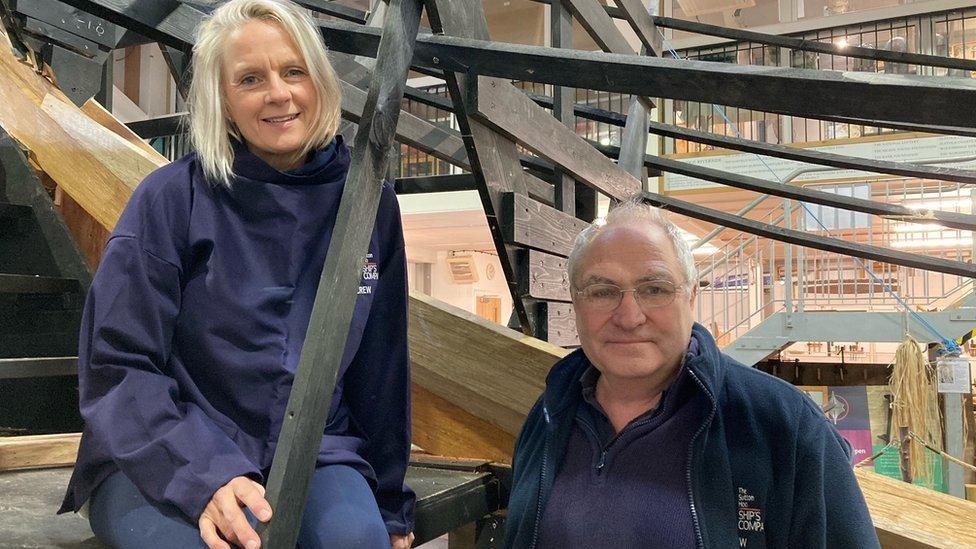
- Published21 November 2021
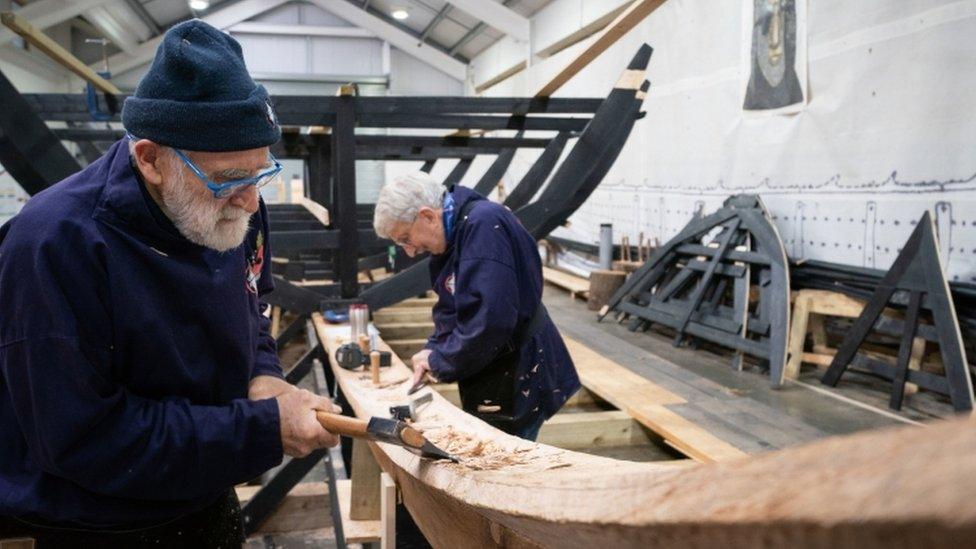
- Published10 November 2021
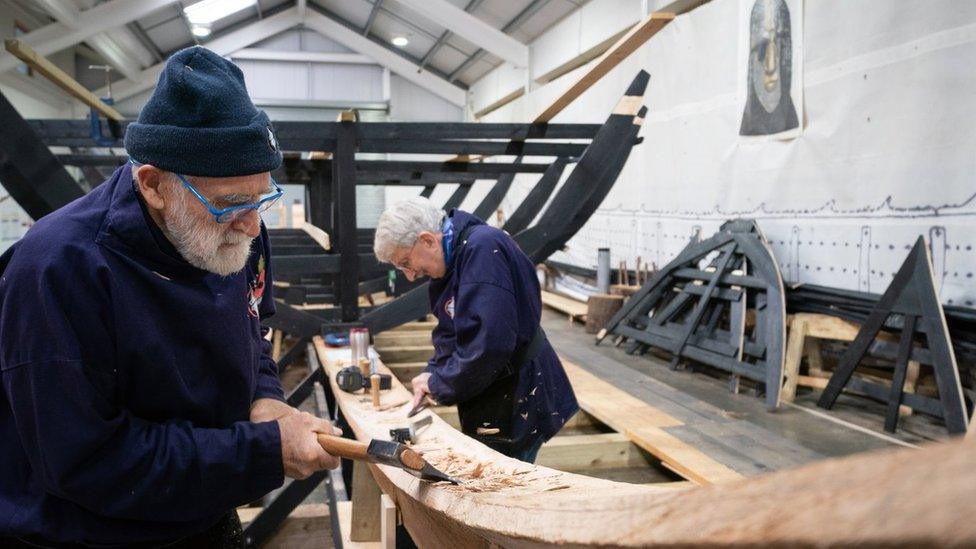
- Published16 September 2021
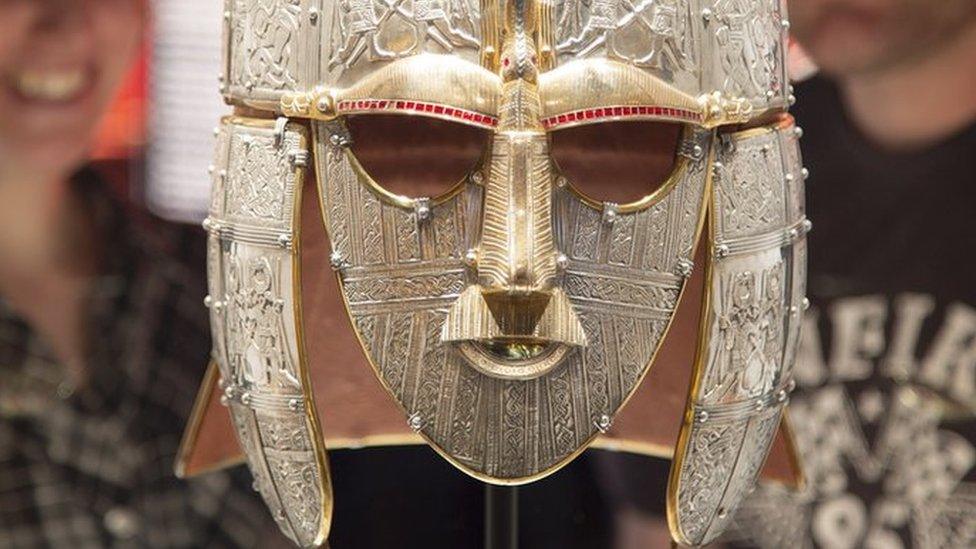
- Published27 June 2021
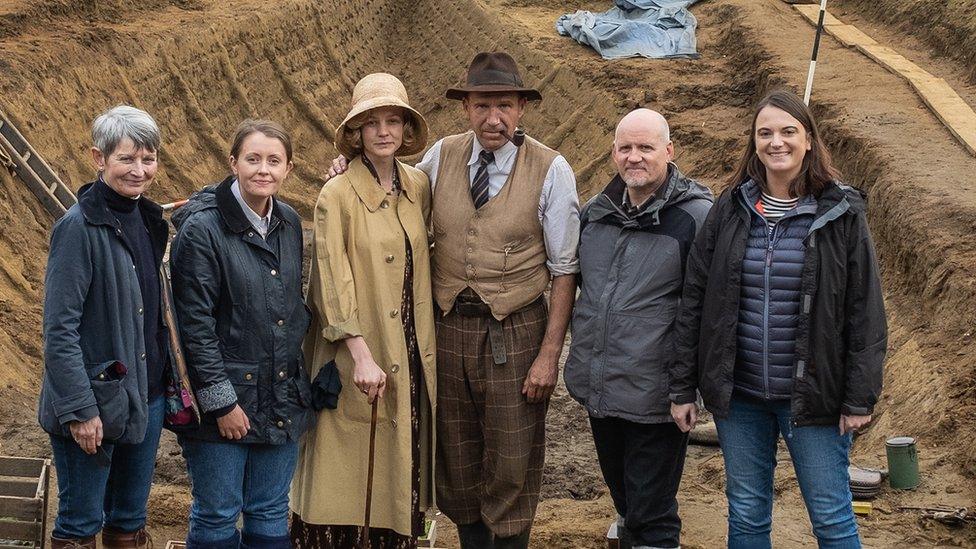
- Published17 January 2021
